Cruising is a popular vacation choice for many people, offering the opportunity to explore beautiful destinations while enjoying luxurious amenities on board. However, have you ever wondered about the environmental impacts of cruising? As we sail through pristine oceans and visit untouched islands, it is crucial to understand the potential effects our favorite pastime has on the environment. From carbon emissions to waste disposal and marine life disturbance, this article will shed light on the impact cruising has on our planet and how we can make more sustainable choices for a greener future.
Air Pollution
When it comes to air pollution, emissions from ship exhausts are a significant concern. Cruise ships, like other large vessels, rely on heavy fuel oil, which contains high levels of sulfur. As a result, ship emissions contribute to the release of sulfur oxides (SOx) into the atmosphere. These sulfurous compounds can have detrimental effects on human health, including respiratory issues and cardiovascular problems.
Another harmful emission from ship exhausts is nitrogen oxides (NOx). These compounds are produced by the combustion of fossil fuels in cruise ship engines. High levels of NOx can lead to the formation of ozone and fine particles, which contribute to air pollution and can have adverse effects on air quality, especially in coastal areas.
Particulate matter (PM) pollution is also a significant concern. Cruise ships emit fine particles into the air, including black carbon. These particles can be inhaled deep into the lungs and have adverse effects on human health, particularly for those with pre-existing respiratory conditions or weakened immune systems.
Black carbon, in particular, is a type of particulate matter that contributes to climate change. It is released from the incomplete combustion of fuel and has a strong warming effect on the atmosphere. As cruise ships navigate through sensitive marine environments, the impact of black carbon emissions can be especially concerning.
Water Pollution
Cruise ships generate various types of water pollution, including ballast water discharges. Ballast water is essential for maintaining stability and safety during a voyage, but it can also introduce invasive species to new environments. When ballast water is taken in and discharged, organisms can be released into non-native habitats, disrupting local ecosystems and threatening native species.
Sewage discharges from cruise ships are another significant concern. Although regulations are in place to limit the release of untreated sewage into the sea, some older or poorly maintained ships may still discharge untreated or partially treated wastewater. This can lead to contamination of coastal waters, posing risks to marine life and public health.
Graywater discharges, which include wastewater from showers, sinks, and laundry facilities, also contribute to water pollution. While graywater is generally less harmful than sewage, it still contains detergents, chemicals, and microorganisms that can negatively impact the marine environment.
Oil spills and fuel leakage are potential environmental threats associated with cruise ships. Accidental oil spills can occur during the refueling process or due to accidents or equipment failures. Even small amounts of spilled oil can have profound and long-lasting ecological consequences, damaging marine habitats and harming wildlife.
Chemical discharges and waste from cruise ships can also contribute to water pollution. Cleaning products, paints, solvents, and other chemicals used on board can find their way into the ocean and impact marine ecosystems. Additionally, the improper disposal of hazardous waste poses risks to both human health and the environment.
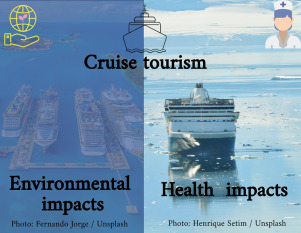
This image is property of ars.els-cdn.com.
Solid Waste Management
The management and disposal of solid waste generated on cruise ships pose significant challenges. With thousands of passengers and crew members on board, a considerable amount of garbage is produced daily.
Improper waste disposal practices, such as the dumping of solid waste overboard, can have severe consequences for marine ecosystems. Plastic waste and other debris can pose entanglement, ingestion, and suffocation hazards for marine animals. Furthermore, the accumulation of plastic waste in the ocean contributes to the growing problem of marine debris and negatively affects the health of marine plants and animals.
Coral Reef Damage
Cruise ship activities can cause damage to delicate coral reefs, which are vital marine ecosystems of immense biodiversity and ecological importance. Anchoring damage is an inherent risk when cruise ships visit reef areas. Uncontrolled anchoring can lead to the destruction of coral colonies, as the heavy anchor and chain can directly impact the reef structure and cause physical damage.
Dredging and construction activities for the development or expansion of cruise ship ports can also contribute to coral reef damage. The removal of sediment and habitats during dredging can disrupt the delicate balance of reef ecosystems and harm coral colonies. Likewise, construction activities can lead to the destruction of coral habitats and the displacement of marine species.
The loss of coral reefs due to cruise ship activities has far-reaching consequences. Coral reefs provide essential ecosystem services, including habitat for fish and other marine organisms. The destruction of coral reefs can disrupt the intricate web of life in the ocean and have lasting ecological impacts.
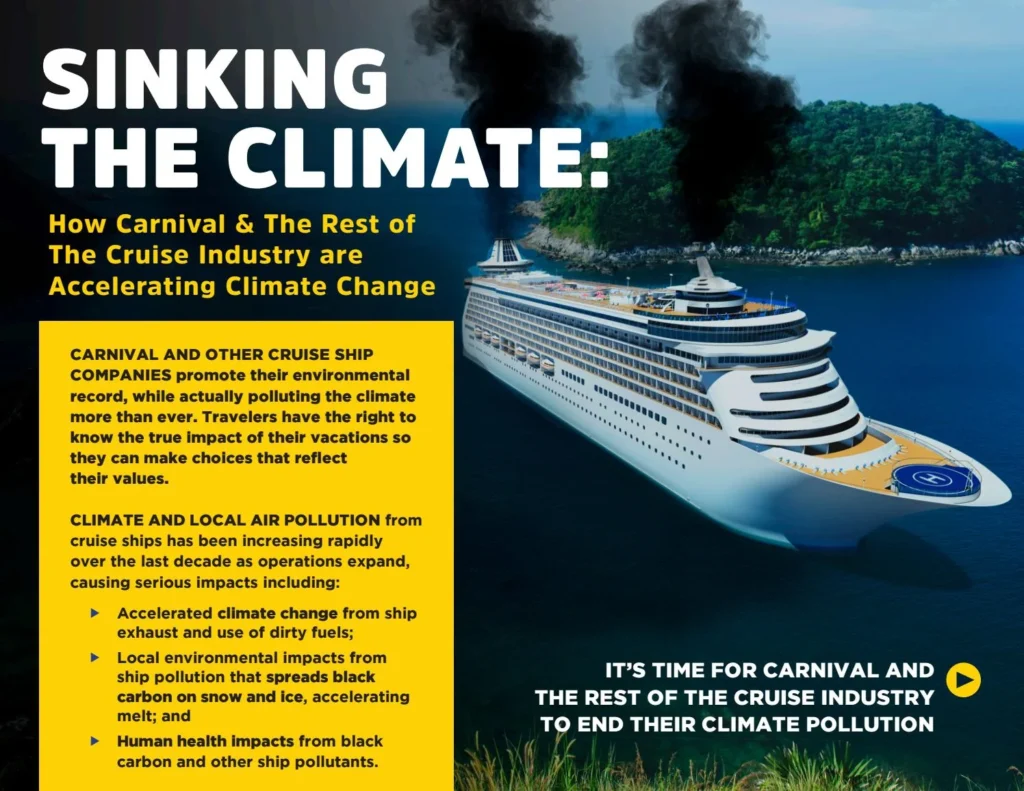
This image is property of image.isu.pub.
Noise Pollution
The noise generated by cruise ships has implications for marine mammals. Underwater noise can interfere with the communication and navigation of marine mammals, such as whales and dolphins, which rely on sound for crucial activities like finding food, mating, and avoiding predators. The continuous exposure to high levels of noise can disrupt their natural behavior, causing stress and displacement from vital habitats.
The disruption of natural behavior patterns due to noise pollution can have cascading effects on marine ecosystems. For example, changes in the behavior of marine mammals can impact their prey populations, altering the dynamics of the entire food chain. It is crucial to minimize noise pollution from cruise ships to ensure the well-being and conservation of marine mammals and the health of marine ecosystems.
Overfishing and Wildlife Disturbance
Cruise ships can contribute to overfishing and disturb marine wildlife through various practices. Unsustainable fishing practices, such as bottom trawling or the use of longlines, can result from cruise ship activities like sport fishing excursions or the provisioning of fresh seafood for passengers. These practices can deplete fish populations, disrupt marine food webs, and jeopardize the delicate balance of marine ecosystems.
The presence of cruise ships in marine areas can also disturb wildlife, especially in fragile and sensitive habitats. Activities such as loud music, excursions, or helicopter overflights can cause stress and alter the natural behavior of marine animals. Disturbance to nesting or breeding areas can also negatively impact populations and disrupt crucial reproductive cycles.
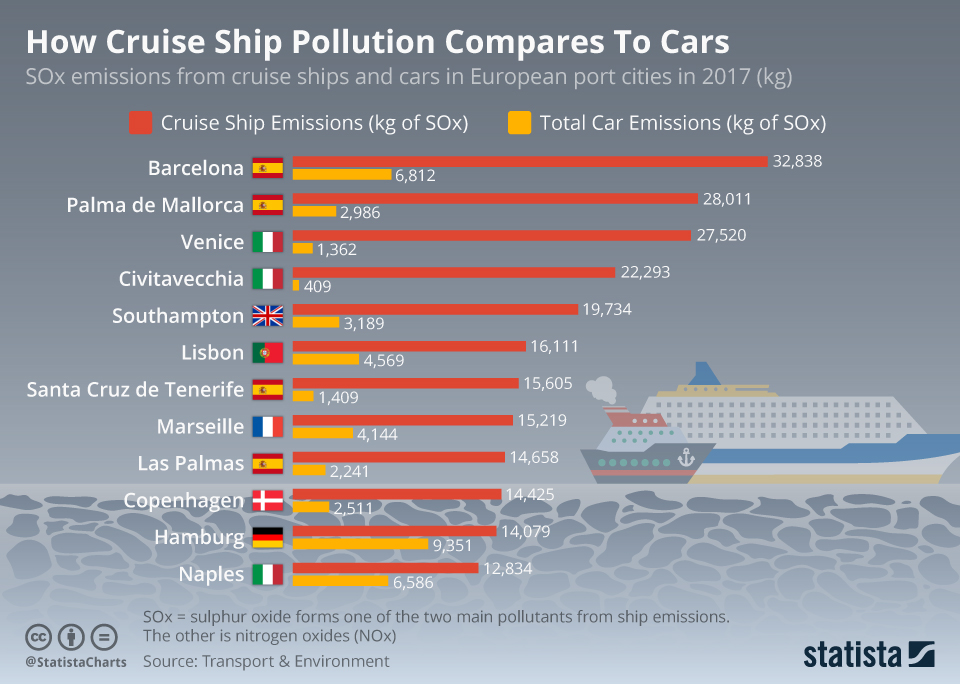
This image is property of cdn.statcdn.com.
Energy Consumption and Carbon Footprint
Cruise ships have massive energy requirements to operate various systems on board. The use of energy-intensive systems, including air conditioning, lighting, and other amenities, contributes to high fuel consumption. The burning of fossil fuels for energy results in the release of carbon dioxide (CO2), a major greenhouse gas responsible for climate change.
The carbon footprint of a single cruise ship journey can be substantial. Not only are ships powered by fossil fuels, but the energy required for the construction, operation, and maintenance of the vessel also contributes to its overall environmental impact. Cruise companies are exploring ways to reduce their carbon footprint, including the use of alternative fuels, energy-efficient technologies, and shore power systems.
Cruise Ship Wastewater Treatment
Wastewater treatment on cruise ships is crucial to minimize the pollution of coastal waters. However, inadequate treatment systems can result in the discharge of untreated or partially treated wastewater, contributing to water pollution. Effluent from sewage treatment systems may still contain high levels of nutrients, bacteria, and other contaminants that can harm marine life and ecosystems.
The improper discharge of untreated wastewater can impact the quality of coastal waters and pose risks to human health when recreational activities, such as swimming or diving, take place. It is essential for cruise ships to invest in advanced wastewater treatment systems that meet and exceed regulatory requirements to prevent pollution and protect the marine environment.
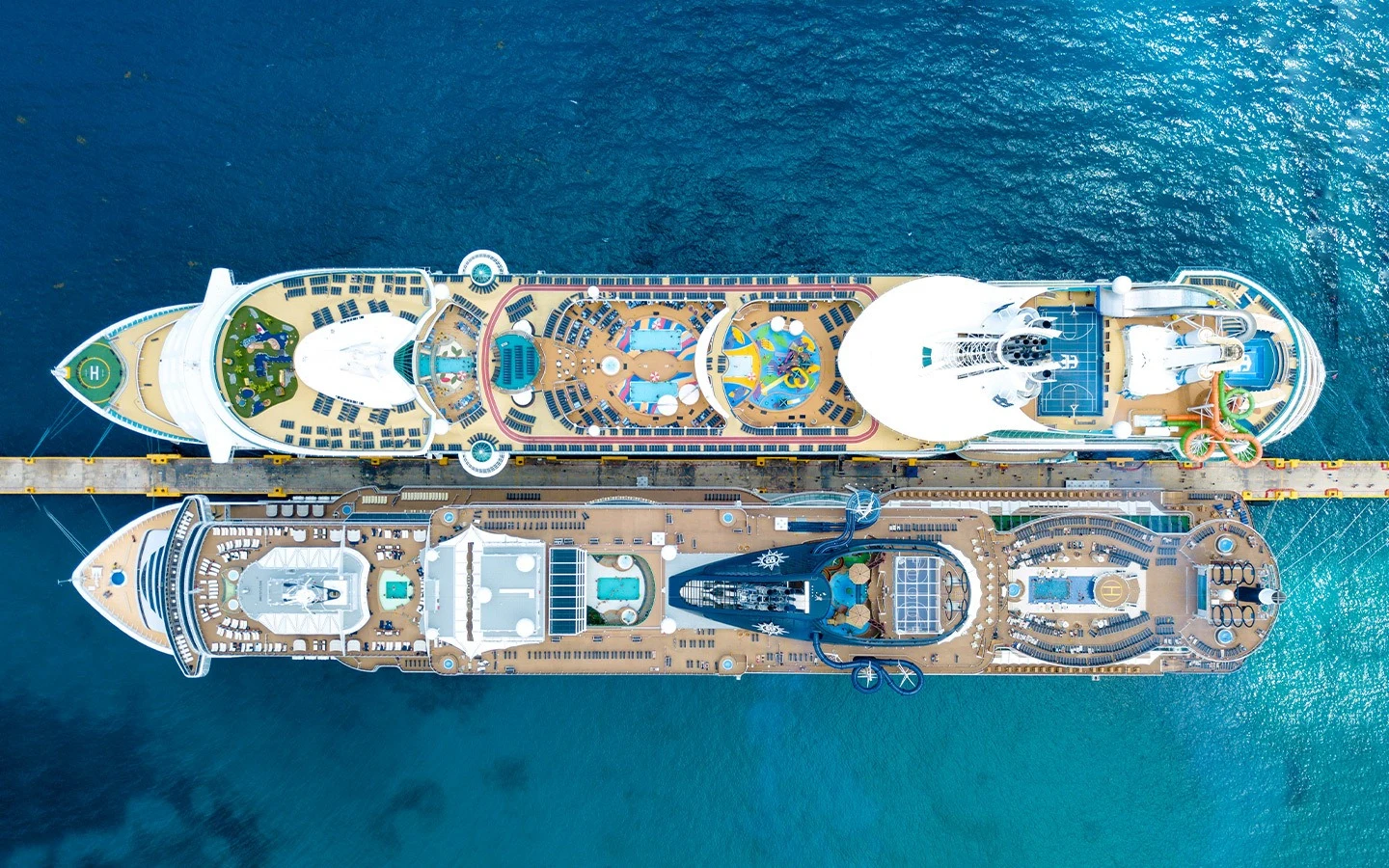
This image is property of www.ontheluce.com.
Invasive Species Introduction
The introduction of invasive species through ballast water exchange is a significant concern associated with cruise ships. When ballast water is taken in at one port and discharged at another, organisms from one location can be released into new environments. These invasive species can outcompete native species, disrupt ecosystems, and cause economic and environmental damage.
Invasive species can have various impacts on local ecosystems. They can outcompete native species for resources, alter food webs, and disturb the natural balance of ecosystems. In addition to ecological consequences, the introduction of invasive species can also result in economic losses as they can damage fisheries, aquaculture, infrastructure, and other industries that depend on healthy marine environments.
Threats to Arctic and Antarctic Environments
The rapid melting of ice in the Arctic and Antarctic regions due to climate change is of great concern. As cruise ships increasingly navigate through these delicate environments, the constant influx of ships poses a risk to the already vulnerable ecosystems. The presence of cruise ships can disturb wildlife, including polar bears, seals, penguins, and various bird species.
Cruise ship activities can also lead to habitat destruction in the Polar Regions. The dredging of ports and construction activities associated with the development of tourist infrastructure can disrupt the delicate balance of these remote ecosystems. The release of contaminants, including oil and chemicals, poses additional risks to the fragile environment and its inhabitants.
The conservation of the Arctic and Antarctic environments is crucial to preserve their unique biodiversity and ecological processes. Balancing cruise ship tourism with stringent regulations and sustainable practices is essential to minimize the impacts on these sensitive Polar Regions.
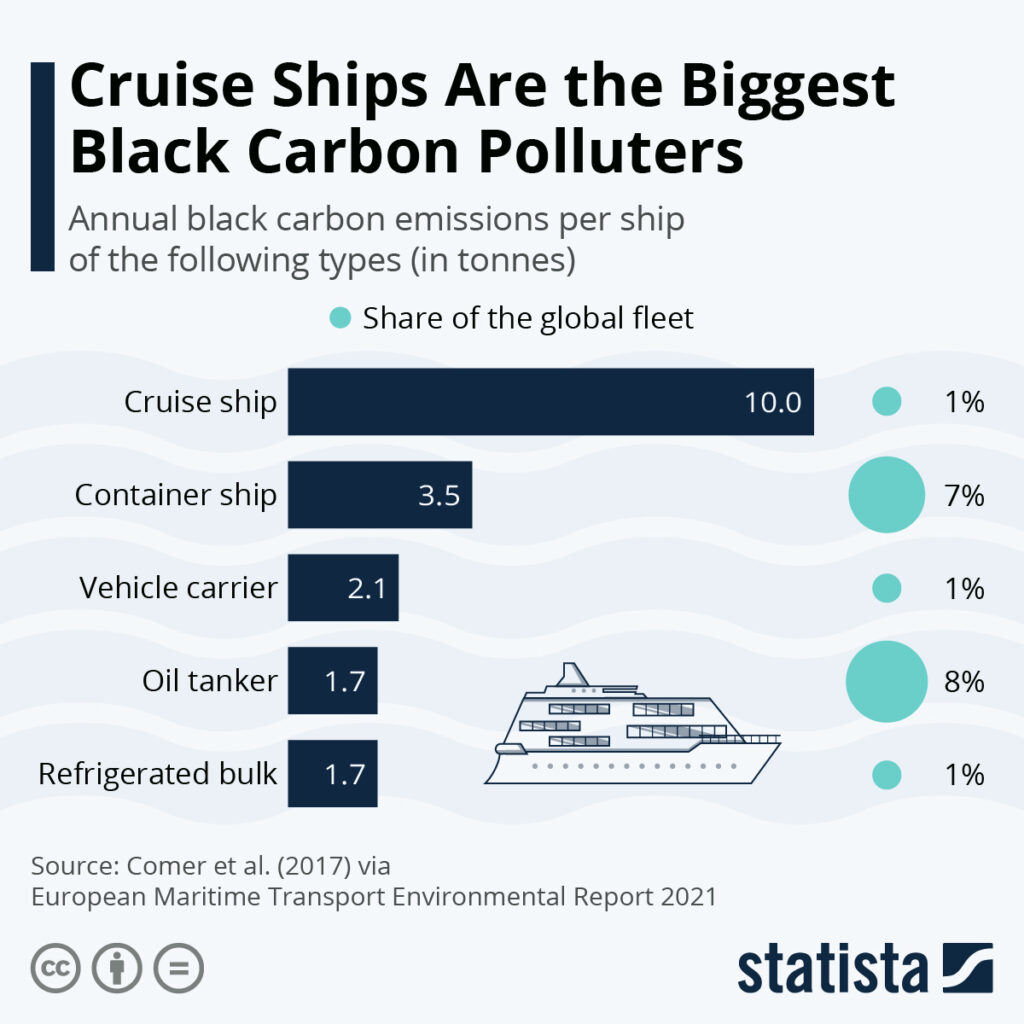
This image is property of cdn.statcdn.com.
Hi, I'm Mike, the author of Ocean Bliss Journeys. As the captain of this incredible website, my mission is to provide you with the ultimate sailing experience. Set sail on a journey of discovery with us and indulge in the perfect mix of adventure and relaxation. Our handpicked cruises offer unparalleled luxury and unforgettable destinations. From romantic getaways to family vacations and hidden gem exploration, I've carefully curated tailored packages to ensure every moment is cherished. So, join me and embark on your dream cruise today. Let's create memories that will last a lifetime.

